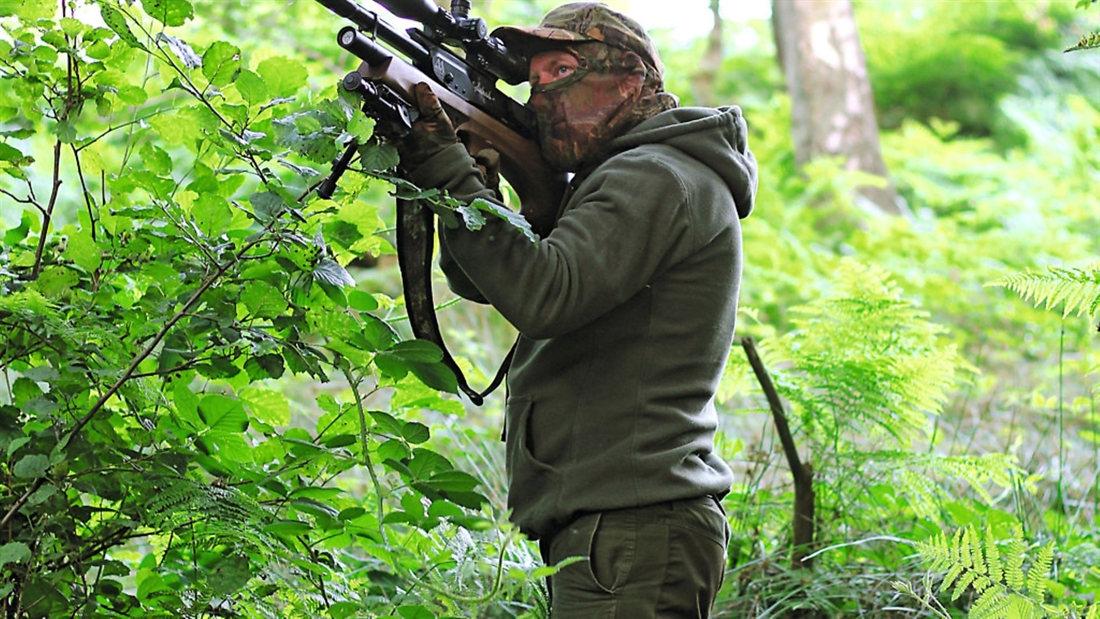Tips and tricks for successful pigeon shooting
Eddie Jones covers some of the ways he goes about shooting pigeons – hoping that’ll help you get a couple more shots at them! credit: Archant With all the doubt regarding the general licences lately, it has been pretty poor shooting for me. I have had some good sessions on the rabbits, but this time
Would you like to appear on our site? We offer sponsored articles and advertising to put you in front of our readers. Find out more.
Eddie Jones covers some of the ways he goes about shooting pigeons – hoping that’ll help you get a couple more shots at them!
With all the doubt regarding the general licences lately, it has been pretty poor shooting for me. I have had some good sessions on the rabbits, but this time of year I like to get out on the feathered variety of pest. The licence debacle has not only caused stress for us pest controllers, but also the many people in the industry who sell the decoys and equipment that we rely on to make the most out of our hunting trips. Now the licences have been reinstated, though, I will be focusing on the birds as much as possible.
The crops are still in the ripening stage and it will be a few more weeks until they are cut, but this doesn’t mean we have to wait for that to get amongst some pigeons. I’m going to cover some of the ways that I go about shooting the pigeon, and I hope that it will help you guys and girls to get a couple more shots at them and improve on your bag.
Pasture fields
Although we as airgunners do not get the numbers that our shotgun brothers do, we can get great bags if we put the work in. I have shot over 50 birds in one session many times, and have seen others taking nearly 100; it’s all about homework and patience to get a productive session.
So, let’s kick off with how I go about controlling pigeons with the air rifle. If your ground has a mixture of crops and grass fields it is a good bet you will find them on the latter. The best place to look for groups of pigeons feeding is on horse paddocks. The young birds will be feeding with the adults now, and if the crops are high then clover or little seed plants will be on the menu, and on pasture fields that have been cut, you will also start to see little groups feeding together.
There are two ways to approach shooting these pigeons. The first method, and probably my favourite, would be to set up a little hide under a hedge line. I try to get as low to the ground as possible, and shoot off a bipod. This way, I am nearly on the same level as the pigeon and I don’t have to worry too much with hold-over or hold-under at the ranges I am shooting.
I will always try to set up where I can get some view of any pigeons coming in, too. Pigeons have remarkable eyesight, the slightest movement will give the game away, and I try to be ready behind the scope before the pigeon lands, so that the only slight movement will be lining the crosshairs on the pigeon’s head.
Stay calm
I set a few decoys 25-30 yards out in the field, usually 3-5 is more than enough, and full body decoys if possible. Pigeons seem to settle better with full body, as opposed to the shell decoys. When I have shot a couple of pigeons I will swap those for the decoys to give the pigeons a more realistic bird to come into. When I shoot pigeons with decoys I always try to go on a calm day, and this is opposite to the shotgunner because they like the wind to get the pigeons flying lower, and to have more chance of them coming into the pattern. Less wind not only helps with your pellet flight, but also lets you set up the decoys in a less regimental fashion; just leave a gap in the middle for one to land because this is usually what happens. Always try to get a head shot on a pigeon because the heart and lungs are hard to get at with all the plumage and crop in the way; with a head shot, you know the pigeon will be dead.
Make a simple hide
Another way I go about having a few shots is to find a favourite sitty tree. Before or after feeding, some pigeons will always go to the same trees to rest up. I always like to use my Jack Pyke LLCS suit for this type of shooting because I can move around on the ground if the pigeons are using other trees in preference to those used in the past.
I try to find some flattened crops; we always have bad rain and high winds before the crops are cut, and pigeons home in on these areas. I then find the nearest trees to this area because the pigeons will most definitely stay close to the food source whilst the digest what they eat. When shooting in this way, always bear in mind your hold-over/under techniques that you learned whilst squirrel shooting. They will work in the same way with pigeons up in the trees.
If you do not have the LLCS suit, or any other clothing that works in a similar way, then you can make up a simple hide, even if you scare the pigeons away whilst you are doing it, they will come back at some point. They will not want to give up on an easy meal, so getting your position set up as perfect and as comfortable as possible should be your priority.
Your hide does not have to be made of the best decoying equipment because any fauna near to the area will do; you are just trying to limit being seen moving about by the pigeons before you get a shot. I will use a proper hide if I am staking out a place all day, of course. This helps because I can use a tripod to rest the rifle and have room for any equipment or bags that I need to hide. I only do this if I know there are a few pigeons in the area, though. There’s no point if you are only expecting a couple of shots.
Near water
Another good place to wait is near a water source. When the weather is hot, you will see plenty of pigeons come in for a drink, especially if your spot is one of the only ones on the ground. I put a single, full-body pigeon decoy near the water trough for added attraction. When it is really hot, you will have some great shooting using this method; a simple hide, or even shooting from a vehicle will do the job. When the crops are cut and you have access to a 4×4, driving around the fields can be very productive, too. You can put a small piece of hide net over your window and drive right up to them. I was amazed how well this method works. I first did it a few years back when I was invited to a ground by a good friend and writer, Mick Garvey. The number of shots we were getting was phenomenal, and we soon had a very respectable bag.
Well, I hope that I’ve shown some ways that you can go about and try your hand at getting a few pigeons for the pot, and demonstrating to the landowner that you can help rid him of another pest. Make sure you can cover as much of your skin as possible with gloves and a face veil, though, because this will improve your chances greatly.
Read more from Eddie Jones…
Related articles
Get the latest news delivered direct to your door
Subscribe to Airgun World








